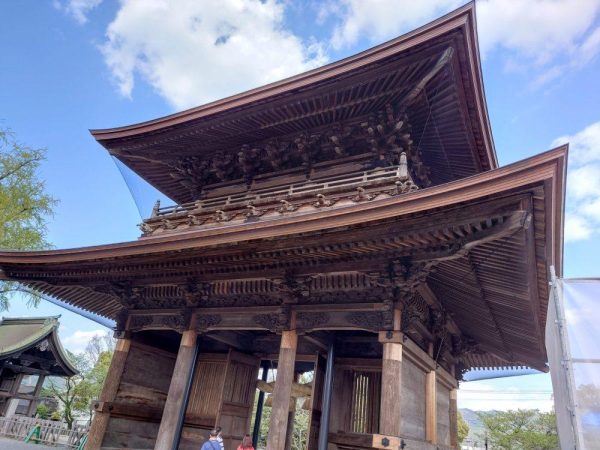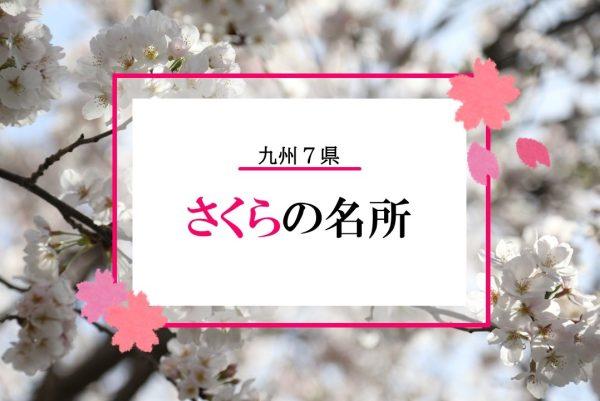Run on the railroad! Run on the bear bike!
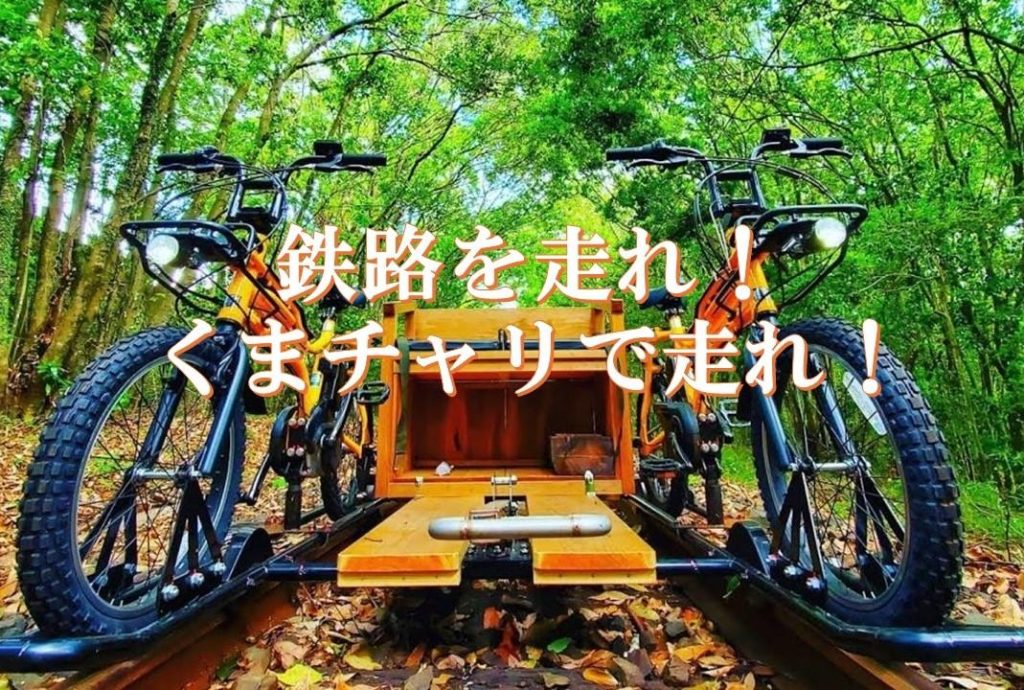
Run on the railroad! Run on the bear bike!
Trains run on the tracks. When the obvious became impossible, Kumagawa Railway Company came up with the idea of running bicycles on the tracks. Tourists pedal their "Kumacharis" along the section of the line that was rendered inoperable by the flooding. The run is aimed at restoring the Kumagawa Railway.
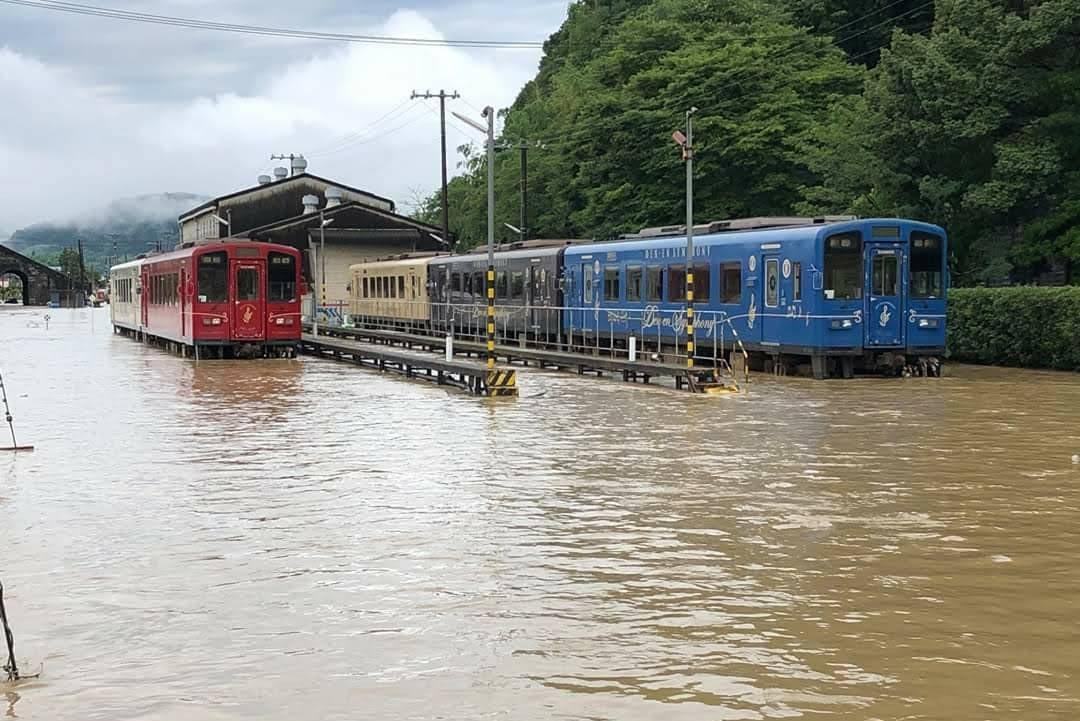
Utilization of out-of-service sections Kyushu's First Rail Cycle
Kumagawa Railway is a 24.8 km long third-sector railroad connecting Hitoyoshi Onsen Station, which is connected to JR Hitoyoshi Station, and Yumae Station in Yunomae Town. The former Japan National Railways Yumae Line, which opened in 1924, is the predecessor of the Yumae Line. This March marked the 100th anniversary of the Yuzen Line, but the line was severely damaged by the "2020 Kumamoto Rainstorm" in July 2020, which flooded all five of its railcars, washed earth and sand onto the tracks and into the station, and caused the Kuma River No. 4 Bridge, a steel bridge, to wash out. The entire line was temporarily shut down, but service is still suspended between Hitoyoshi Onsen Station and Higo Nishimura Station, and alternative buses are in operation.
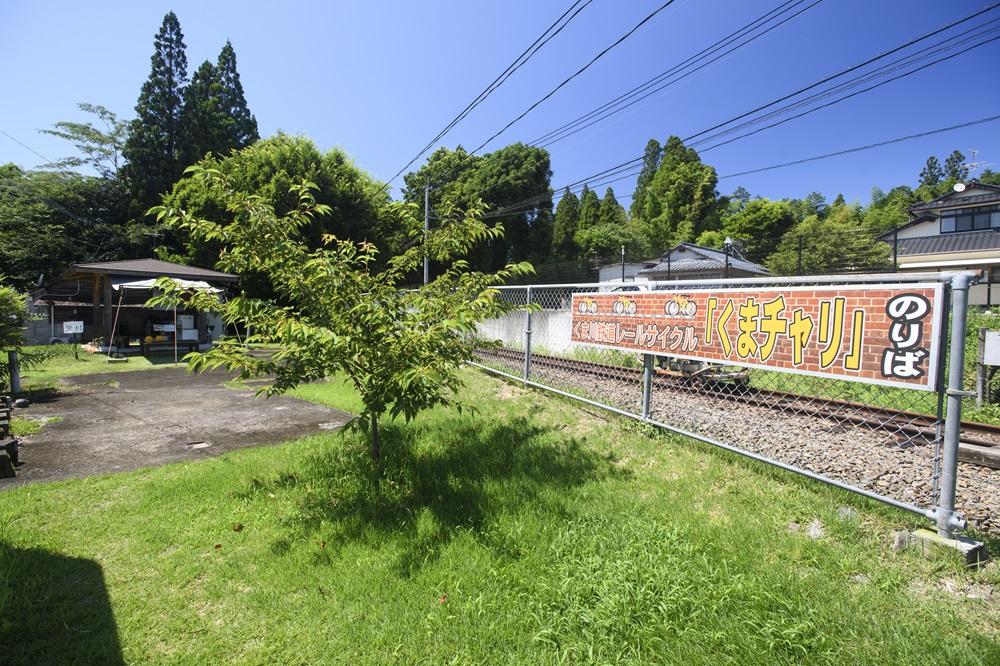
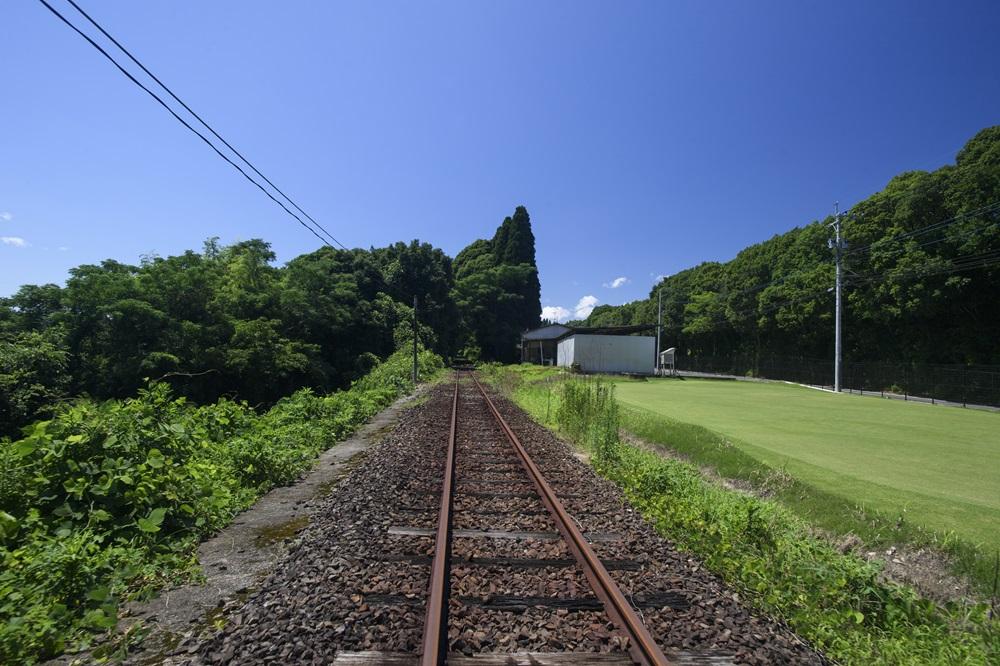
For a loss-making local line, it was a double whammy of coronas and natural disasters. However, the "Kumachari" program was designed to convert the tracks of the inactive section of the line into an experience course for sightseers. Taking a cue from the "Gattango," which utilized the former Kamioka Line (closed line) in Gifu Prefecture, two electrically power assisted bicycles were connected together to form a "four-seater cycle" equipped with seats for two people. Introduced in the year following the disaster, it is in operation from spring to late fall, and is "very popular among tourists," says Mr. Takashi Shimobayashi, manager of Kumagawa Railway Co.
The boarding location is by the Kumagawa Railway tracks at the entrance to Toshima Sugawara Shrine in Sagara Village. The fare is to be paid here. The fare is 4,000 yen for two people, plus 500 yen for each additional person, for a total of 5,000 yen for four people. Riders must be at least 145 cm tall to ride the bicycles, and elementary and junior high school students must be accompanied by a parent or guardian. Helmets must be worn, and Mr. Shimobayashi leads the way on an aluminum cart as the riders pedal along the tracks.
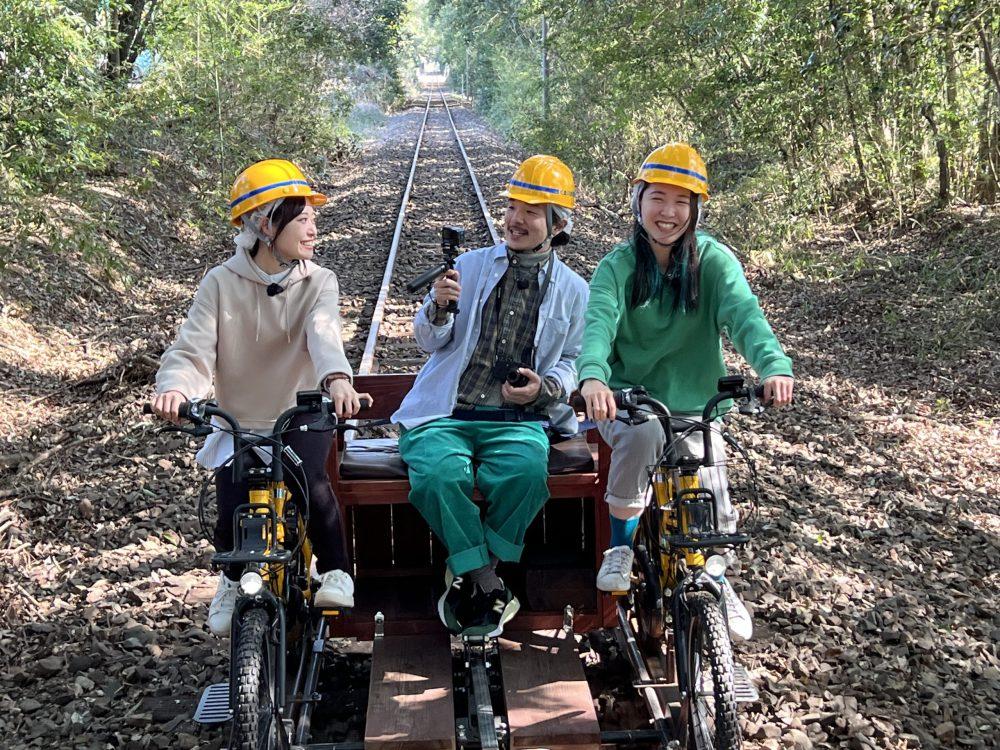
Riding through forest tunnels and soaking in the pleasure of monopolizing the tracks.
The route will run from a point before Kawamura Station, which is currently closed, to a point before the crossing at Ganjoji Station of the Sagara Clan. The distance is approximately 1.7 km one way, round trip. The round trip takes about 30 minutes. Thanks to the electric power-assisted bicycle, the ride started out well. The sound of "clunk, clunk, clunk" echoes from beneath my feet. Unlike the crisp, continuous "rattling, rattling, rattling" sound of a train, this is a human-powered four-seater, so the "rattling, rattling, rattling" sound is slow and sluggish. Every time the pedestal bracket of the bear-chariot touches the joints of the tracks, there is a leisurely clatter and thump. It is both a bicycle and a train, exhilarating and tranquil at the same time.
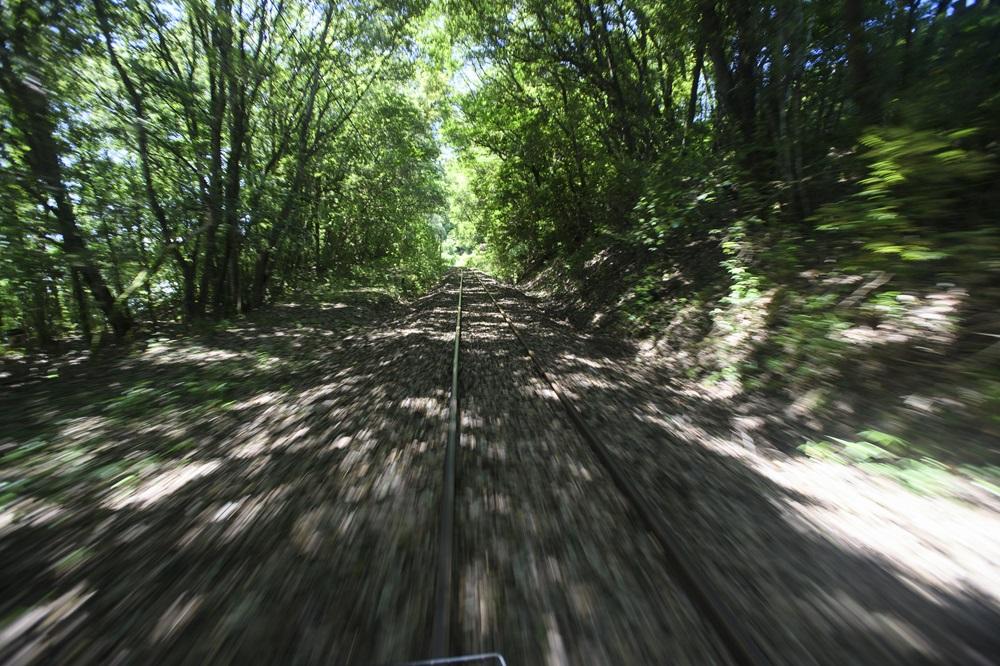
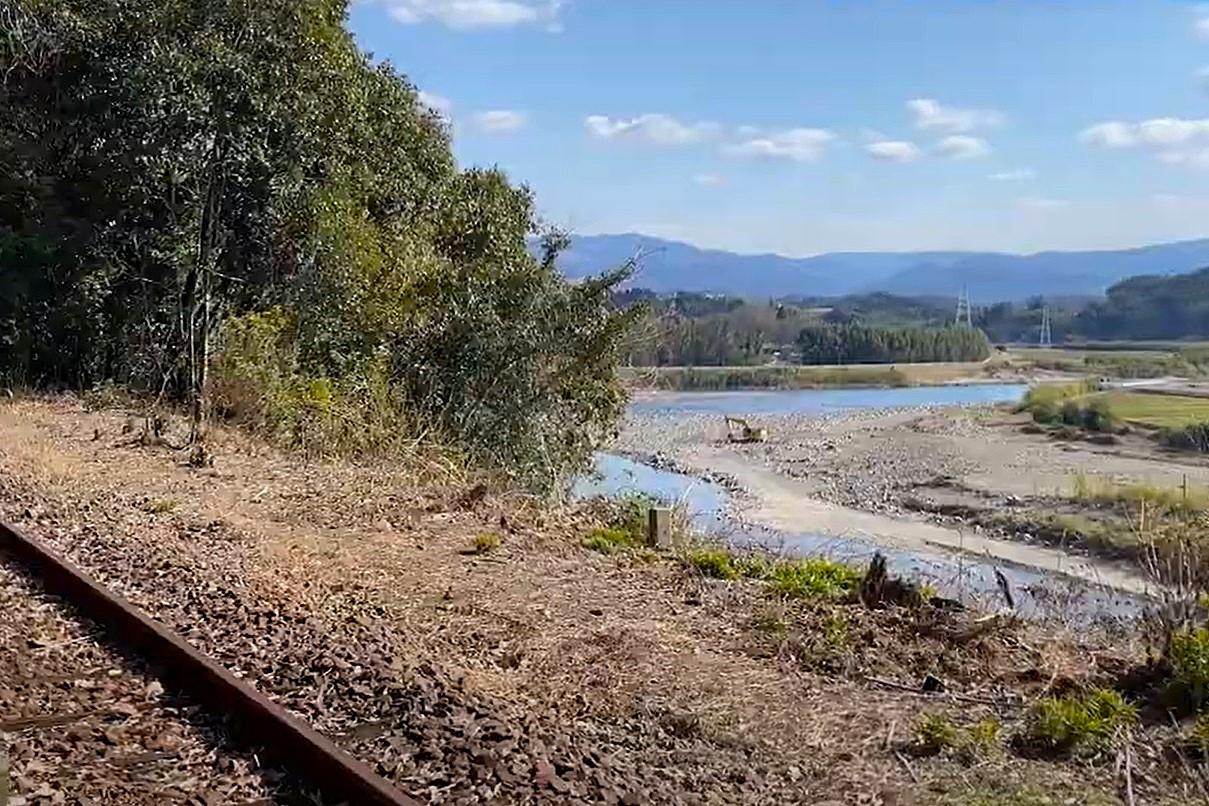
The charlie soon enters a section called the "forest tunnel". It is literally an exhilarating ride through the trees. The sun shines through the trees and the breeze is pleasant. It is cool even in mid-summer. In some places, a narrow stream of water, perhaps a spring, runs along the side of the track. At a break in the forest, the Kuma River comes into view on the left. The Kuma River is one of the three most rapid rivers in Japan, where whitewater rafting, rafting, sweetfish fishing, and other river activities can be enjoyed. Because of the Kuma River, rice cultivation is abundant due to the abundant water resources, and peace has been maintained for 700 years. It is an indispensable part of the Kuma region, despite flood damage.
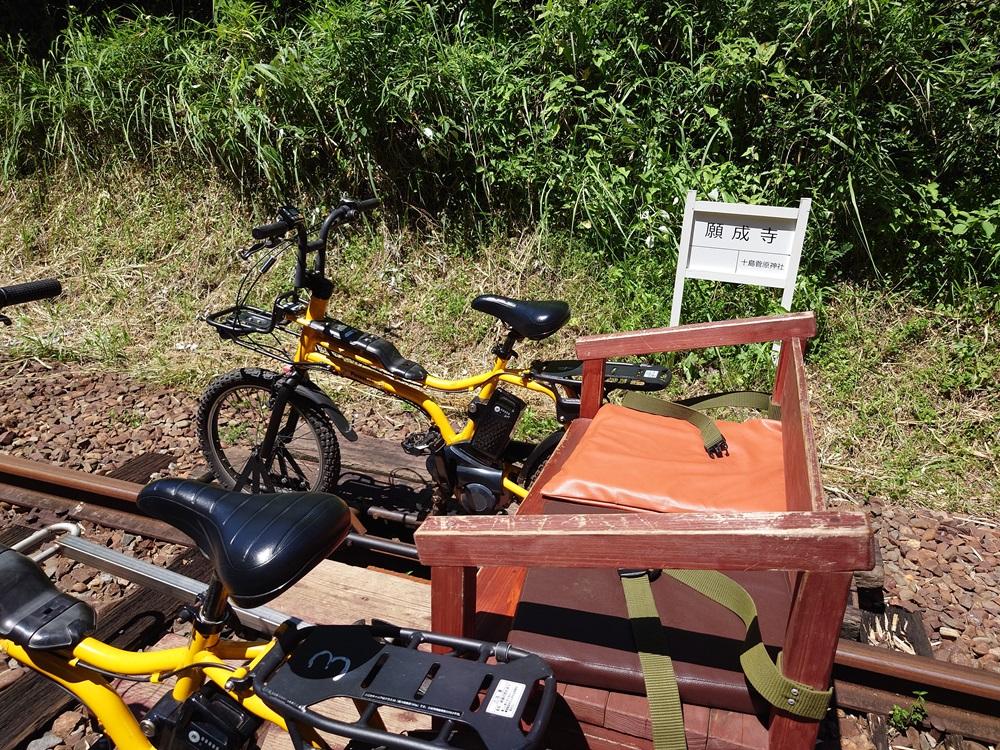
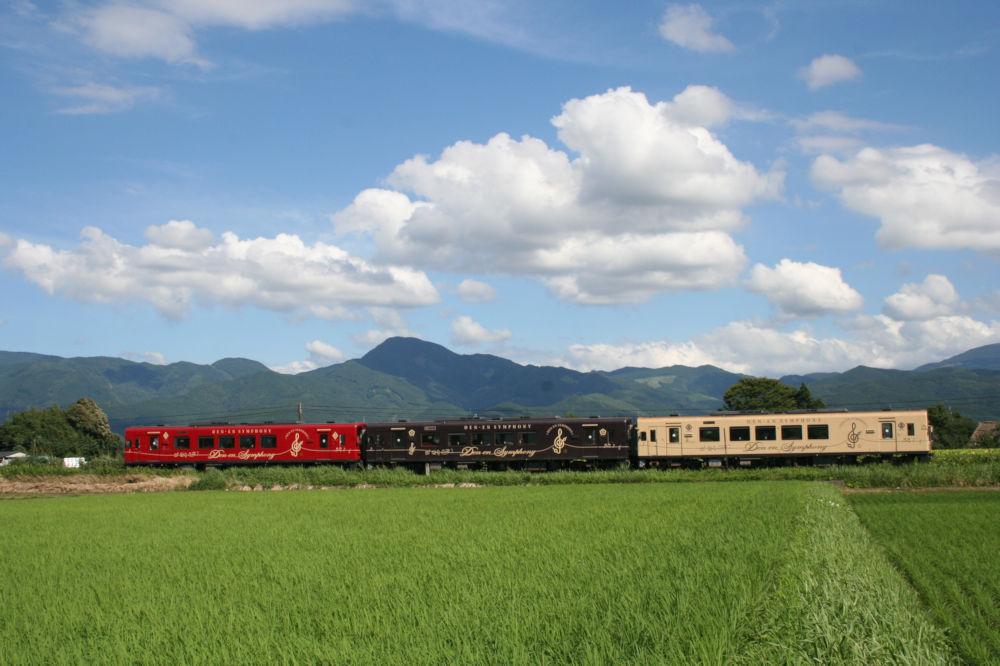
Bike trip in a blink of an eye Only a few more days to go until the last run
Now, we arrive at "Ganjoji Temple," the turnaround point. This is where we will take a break. Chairs are placed beside the track, and you can take a rest in the shade of the trees. Mr. Shimobayashi said that nearby are "Ganjoji Temple of the Sagara Clan" and "Kannon Zenji Temple," both of which are old temples in Hitoyoshi. Changing the direction of the bicycle is quite easy. Mr. Shimobayashi raises the lever in the center of the pedestal and turns the pedestal halfway around, just like a half-turn seat on a train. The bicycle is now pedaling again, this time toward "Toshima Sugawara Shrine.
Gotta, gottin, gottin, gottin.... Up and down the gentle incline, through the woods, and back to childhood. It is like the movie "Stand by Me" and like the last scene of the old "Little Love Melody". The bike ride takes about 30 minutes in time. This is the only place in Kyushu where you can ride on the tracks by human power. The "Kumachari" will actually come to an end on November 24 this year, when the Kumagawa Railway will be fully reopened in 2025 with the construction of a new bridge over the Kuma River No. 4 Bridge. It is regrettable, but after all, railroads are the legs of local residents. The day will come again when the famous "Rural Symphony" train will run along the entire line. The last run of the "Kumachari" has begun in preparation for the restoration of the entire line. We hope that you will not miss this opportunity to experience it for yourself.
| name | Kumagawa Railway Co. 265 Nakaoi-cho, Hitoyoshi-shi, Kumamoto, Japan 0966-23-5011 |
|---|---|
| supplementary information | Related URL:. Click here for the Kumachari Reservation Form Kumagawa Railway Company Official Website |
Just by the way... Kuma Bike Ride Stopover
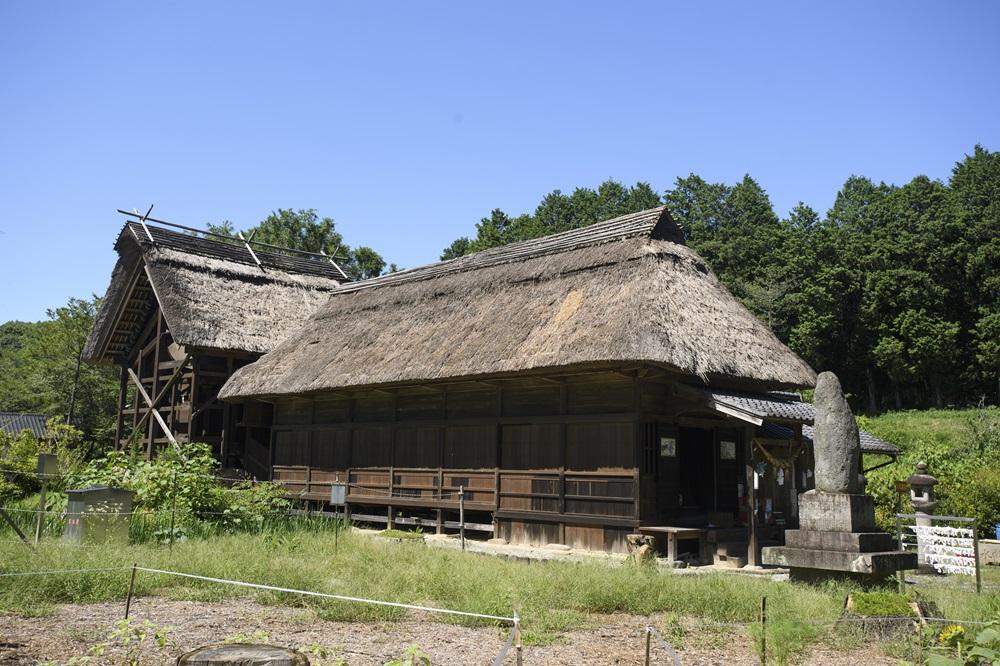
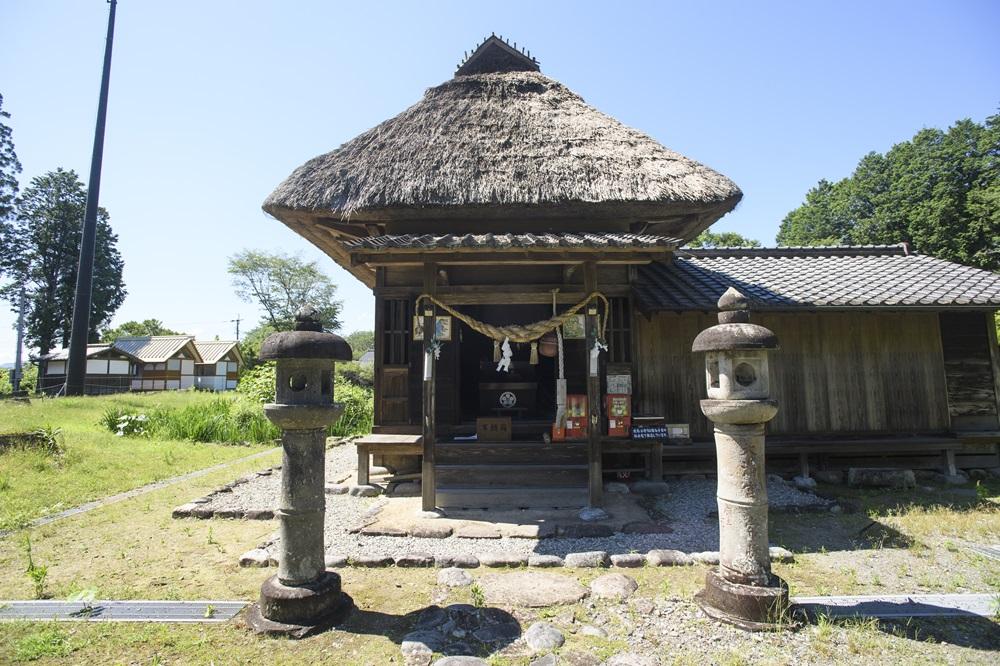
Stop by the Toshima Sugawara Shrine, located next to the Kumachari ride site.
The main shrine, with its eye-catching thatched roof, is designated as a national important cultural property, and was originally built in the 13th century, with the current main shrine dating from the Azuchi-Momoyama period. There are ten islands in the pond on the shrine grounds, and "Toshima" is pronounced "toshima," which is said to mean "your wish will be granted. The deity is Sugawara Michizane, the god of learning. Therefore, it is said that students preparing for entrance exams come to the shrine to pray with the slogan, "I will make my wish come true.
| name | 2240 Yanase, Sagara-mura, Kuma-gun, Kumamoto 0966-22-7757 |
|---|
_cebfcf23-1906-4bb8-b083-ce273ddc204b.jpg)
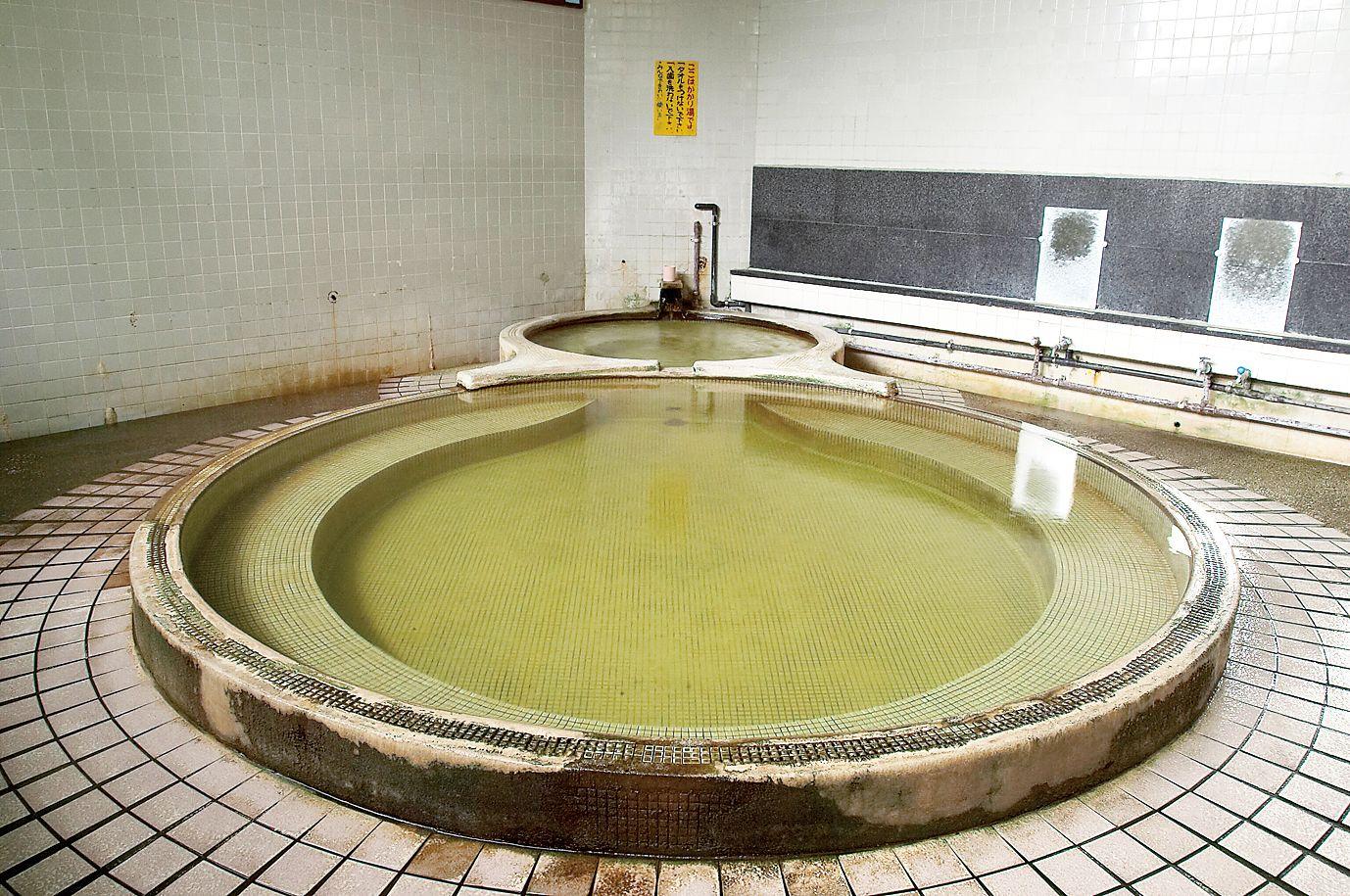
Around Sagara-han Ganjoji Station, go to "Sagara-han Ganjoji Temple," which is also the origin of the station's name.
The temple is the family temple of the feudal lord Sagara, and was founded in 1233. The cemetery in the back of the temple grounds was constructed in the mid-Edo period by order of the feudal lord to collect the graves of successive lords and their families that had been scattered throughout the region. The cemetery is lined with many five-ringed pagodas and boasts the majesty of a feudal lord's cemetery.
Now, Hitoyoshi City is a hot spring resort known for its beautiful hot springs. There are a number of inexpensive public bathhouses. Why don't you wash away the sweat of your Kumabaricycle ride in a hot spring? The Sagara Clan Ganjoji Onsen is close to both the station and the temple. And the bathing fee is only 200 yen! The water is sodium bicarbonate and chloride spring water, and of course it is free-flowing. The water is sodium hydrogencarbonate/chloride spring water, and of course it is free-flowing. The retro Showa-style baths are also popular with locals.
| name | Ganjoji Temple of the Sagara Clan 956 Ganjoji-cho, Hitoyoshi-shi, Kumamoto 0966-24-4161 |
|---|---|
| Hours of Prayer | 9:00-17:00 |
| regular closing day | without a holiday |
| Business Hours | 6:00-10:00, 13:00-22:00 |


